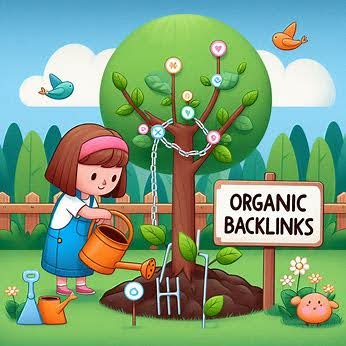Content Writing For Project
Content writing for projects is an essential aspect of effective communication, ensuring that ideas, objectives, and results are conveyed clearly and engagingly. Whether you are working on a business proposal, a marketing campaign, a research project, or any other type of project, effective content writing can significantly impact its success. This guide covers the critical components of content writing for projects, from planning and structuring to optimizing and presenting your content.
Find Out How To Make Money As A Full-Time Writer/Blogger Guide.
Understanding Your Audience
Before you begin writing, it’s crucial to understand who your audience is. Tailoring your content to meet the needs and preferences of your audience can enhance engagement and effectiveness. Consider the following:
- Identify Stakeholders: Determine who will read your content. This could include team members, clients, investors, or the general public. Understanding their backgrounds, interests, and expectations will help you shape your message.
- Assess Knowledge Level: Gauge the familiarity your audience has with the project topic. Use appropriate language and terminology based on their expertise to ensure your content is accessible.
- Consider Their Goals: Think about what your audience hopes to gain from your content. Are they seeking information, persuasion, or inspiration? Tailoring your approach will make your writing more impactful.
Defining the Project Scope and Objectives
A well-defined project scope and clear objectives are fundamental to successful content writing. These elements guide your writing and provide a framework for the information you present. Here’s how to articulate these effectively:
- Project Scope: Clearly outline the boundaries of your project, including what will and won’t be included. This helps set expectations and avoids misunderstandings.
- Objectives: Define specific, measurable, achievable, relevant, and time-bound (SMART) objectives for your project. These objectives will serve as a reference point throughout the writing process.
Structuring Your Content
A logical structure is essential for clarity and coherence in your content. Here are the key components to consider when structuring your project content:
- Introduction: Start with a compelling introduction that grabs the reader’s attention. Clearly state the project’s purpose, significance, and what the reader can expect from the content.
- Background Information: Provide context and background information about the project. This could include relevant research, market analysis, or historical data that supports your project’s objectives.
- Methodology: Outline the methods and processes you will use to achieve the project’s objectives. This section should be clear and detailed enough to give readers confidence in your approach.
- Implementation Plan: Present a step-by-step plan for executing the project. Include timelines, resources needed, and key milestones to track progress.
- Results and Analysis: If applicable, discuss expected results or share findings from the project. Analyze the data or information collected, highlighting key insights and implications.
- Conclusion: Summarize the main points of your content and reiterate the significance of the project. Provide recommendations or next steps if relevant.
Writing Style and Tone
The style and tone of your writing can greatly influence how your content is received. Consider the following when determining your writing style:
- Clarity and Conciseness: Use clear and straightforward language. Avoid jargon and overly complex sentences that may confuse your readers.
- Engaging Tone: Adapt a tone that aligns with your audience and the project type. For example, a business proposal may require a formal tone, while a marketing campaign might benefit from a more conversational and engaging style.
- Active Voice: Favor the active voice over the passive voice to create a more dynamic and engaging narrative. Active voice often makes sentences stronger and more direct.
Incorporating Visual Elements
Incorporating visual elements into your project content can enhance understanding and engagement. Consider the following:
- Graphs and Charts: Use visual data representations to summarize key findings or trends. This can make complex information more digestible.
- Infographics: Create infographics to present information visually. These can be especially effective for summarizing processes, statistics, or comparisons.
- Images and Videos: Use relevant images or videos to support your content. Visual media can help illustrate points, evoke emotions, and maintain viewer interest.
Editing and Proofreading
Thorough editing and proofreading are essential to ensure your content is polished and professional. Here are some strategies to enhance the quality of your writing:
- Revise for Clarity: Read through your content multiple times, focusing on clarity and coherence. Ensure each section flows logically to the next.
- Check for Grammar and Spelling: Use grammar-checking tools or enlist the help of a colleague to catch any errors. Poor grammar or spelling mistakes can undermine credibility.
- Seek Feedback: Share your content with trusted colleagues or mentors for feedback. Constructive criticism can provide new insights and help you identify areas for improvement.
You Can Start A News Blog To Get Fast Grow
Optimizing for Search Engines
If your project content will be published online, optimizing it for search engines can increase visibility and reach. Consider these SEO practices:
- Keyword Research: Identify relevant keywords related to your project. Use tools like Google Keyword Planner to find terms that your target audience is searching for.
- Incorporate Keywords: Integrate keywords naturally throughout your content, including in headings, subheadings, and the body text. Avoid keyword stuffing, which can lead to poor readability.
- Meta Descriptions and Tags: Create engaging meta descriptions and tags that accurately summarize your content and include relevant keywords. These elements help improve search engine rankings.
Engaging Stakeholders
Engaging stakeholders throughout the project lifecycle can enhance collaboration and increase buy-in. Here are some strategies to foster engagement:
- Regular Updates: Keep stakeholders informed about project progress through regular updates. This could be through newsletters, meetings, or project management tools.
- Solicit Feedback: Encourage input and feedback from stakeholders at various stages of the project. This can foster a sense of ownership and commitment.
- Celebrate Milestones: Acknowledge and celebrate project milestones to maintain enthusiasm and motivation among team members and stakeholders.






